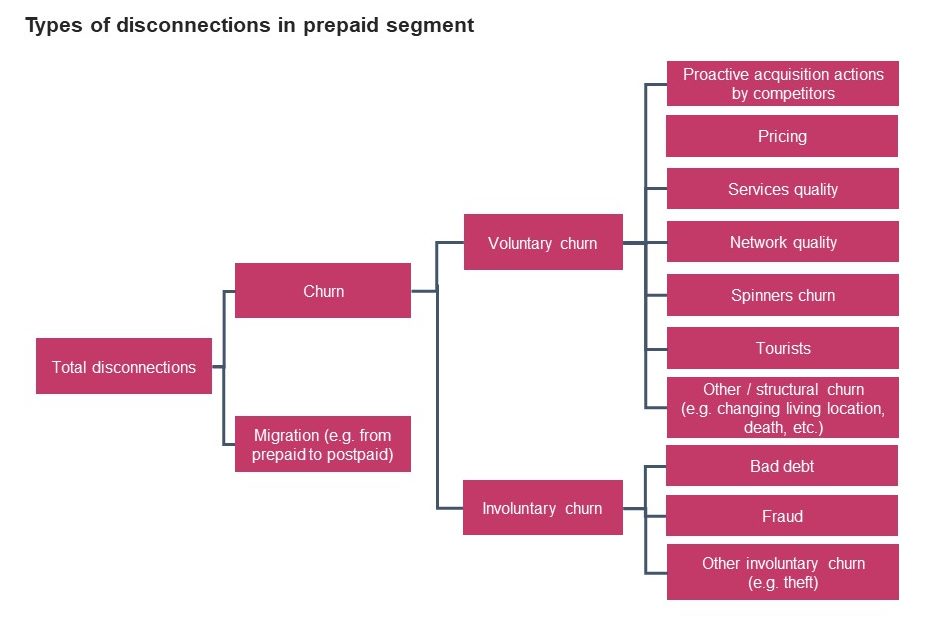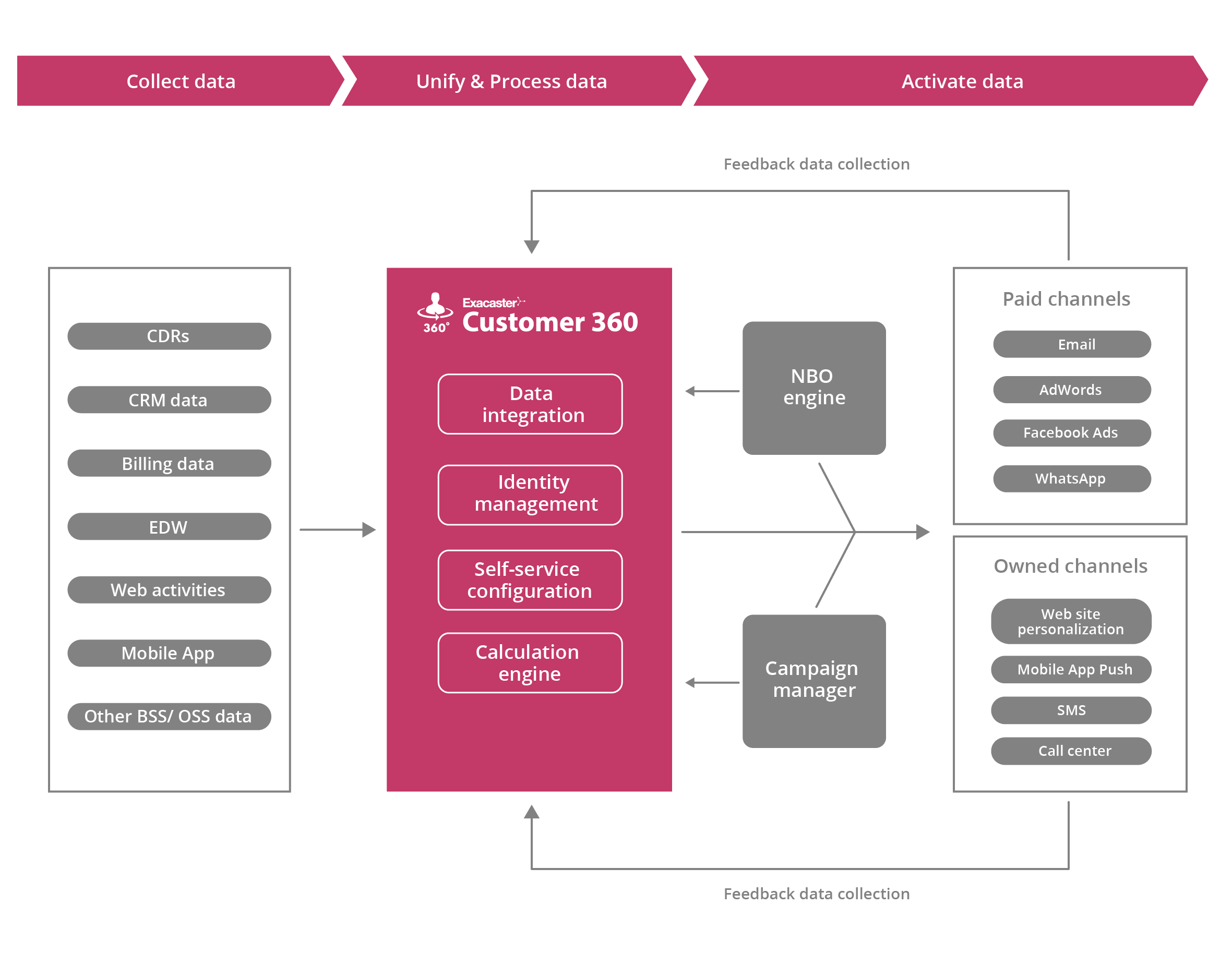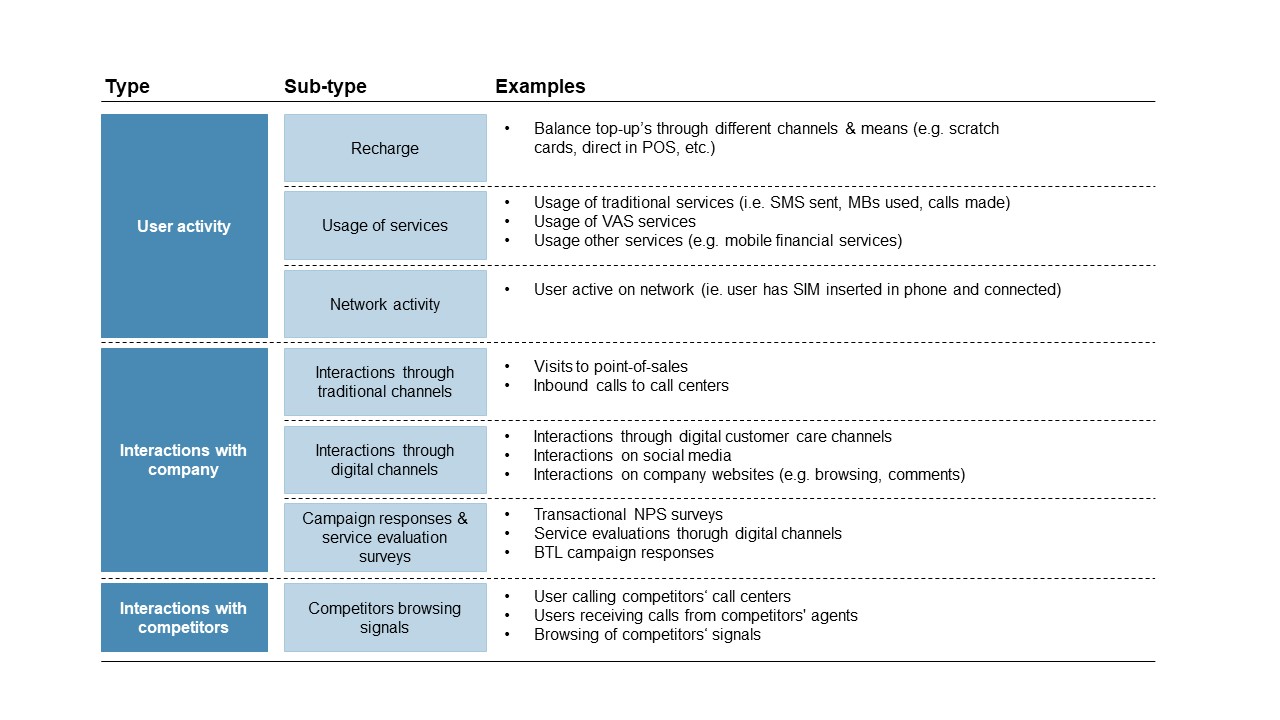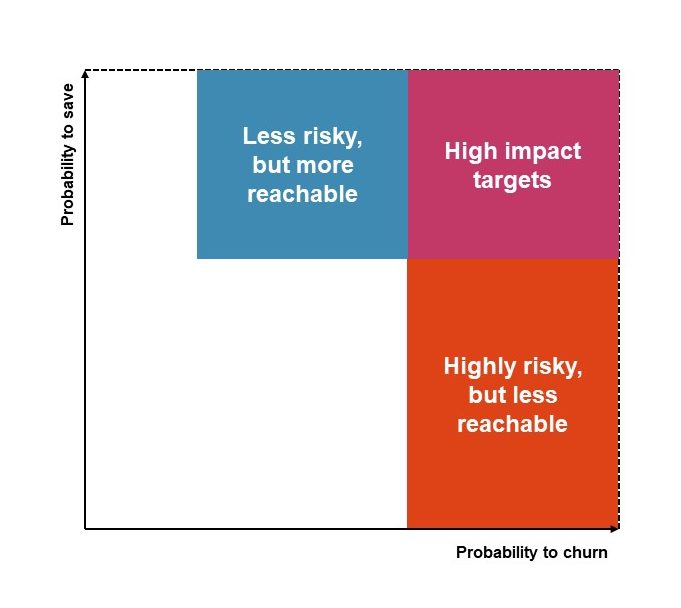Building effective customer retention initiatives requires significant effort. That’s especially apparent in the case of prepaid telecommunications businesses. Prepaid customers can churn at any time without any interaction with the company. Therefore relationship with prepaid customer remains fragile – even in this era of AI and big data.
Here are the 4 main challenges telecom companies face when building effective retention campaigns. Learn how to overcome it and reduce the churn rate among prepaid customers.
Challenge 1: Identifying signals of riskiness in the data
There are no precise moments in the prepaid customer lifecycle that can potentially help to identify potential churners.
When do you consider your customers to be at risk of churning? After 30 days without any actions taken? Or is it 7 days? How do you pick a single criterion for identifying risky users correctly if each customer is using data differently?
Targeting all customers on day 30 of no activity is already going to be too late most of the time.
Using AI/ML algorithms to identify these obscure signals from customer consumption information and predict customer riskiness on an individual user level helps to solve these issues. However, this approach requires data that contains these signals to be collected and cleaned.
Data science expertise within the company is also a necessity if this approach is to work. This is especially true because these tasks can become highly complex.
Telecom companies usually have an abundance of systems that collect or generate data on customers.
Typically, there are 3 main types of data sources which you should start collecting first: user activity, interactions with company and interactions with competitors. That’s a good start.
Challenge 2: Identifying risky users early
AI/ML predictive models have become a common practice for identifying risky users in the telecommunications industry. However, these churn models don’t bring the expected business results for most of the telecoms.
Typically, the late identification of risky users is the root cause of low ROI in retention campaigns.
Often this issue occurs due to predictive model configuration, which doesn’t fully match business needs. Simply predicting the probability of churn is not enough. Such an approach will always recommend targeting first those users who have already shown no activity for a long time.
Predicting not only the likelihood of churn but also the likelihood of being able to retain a customer can help to solve this issue.
Target users who have a high probability of churning and a high potential of being retained. That will help to generate significantly higher incremental revenue while decreasing churn.
There are 3 main potential target groups when using probability to churn and probability to be retained: high impact targets, highly risky, but less reachable and less risky, but more reachable.
Challenge 3: Personalizing retention efforts
Identifying risky users is not enough to have a real impact on your bottom line. This requires a deep understanding of the main drivers of churn and the tactics or offers that can motivate users to remain.
Prepaid base managers often use a “spray & pray” tactic when running retention campaigns and hope it will have a significant business impact.
Usually, it’s a single promo offer to a large share of the base through a single-channel. These tactics often lead to a deteriorated profit margin in the base and a waste of marketing budget. That’s because a large share of customers receive “promo” offers although they were not even planning to churn.
Digging deeper and understanding risky users better could allow uncovering the root causes of churn. That includes, which signals in the data indicate an increased churn risk.
Here at Exacaster, we identified typical churn drivers in the prepaid segment.
 Understanding these drivers allows marketing teams to tailor their retention tactics and offers. It is now based on the real issues a customer is facing. In this way, they can increase their potential to successfully retain customers.
Understanding these drivers allows marketing teams to tailor their retention tactics and offers. It is now based on the real issues a customer is facing. In this way, they can increase their potential to successfully retain customers.
For example, an excellent tactic for retaining customers who have recently experienced a network outage could be an apology message with a small perk (e.g. a free coffee at a local coffee shop). On the other hand, customers who have been identified as tourists shouldn’t be targeted at all. They will inevitably leave the network.
Challenge 4: Automating the end-to-end process
However, the biggest challenge for telecom companies is faced at “the last mile”. How to operationalize the signals about risky users that have been identified and proactively engage them?
Often these processes are carried out manually, which means they are hugely dependent on team availability. In addition, data science teams become preoccupied with running the same processes over and over again. That limits their ability to explore further and find new insights.
A customer data platform (CDP) for telecoms streamlines personalization and customer value management processes.
CDP enables automated data collection, processing, and exposure, significantly reducing both the effort required and time to market. 
What to read next?
Download whitepaper “Customer Retention For Prepaid Base Management” and learn more:
- What is a comprehensive value growth framework
- Main challenges to retain prepaid customer
- 5 steps to build an effective retention initiative
- How to keep risky new prepaid subscribers
- Why Customer 360 enables next-generation customer base management
MEET THE AUTHOR
Tomas
 After implementing big-data analytics processes for one of the largest telco groups in South America, Tomas was driving the development of the Customer Data Platform solution to help Telecoms achieve customer experience excellence.
After implementing big-data analytics processes for one of the largest telco groups in South America, Tomas was driving the development of the Customer Data Platform solution to help Telecoms achieve customer experience excellence.










